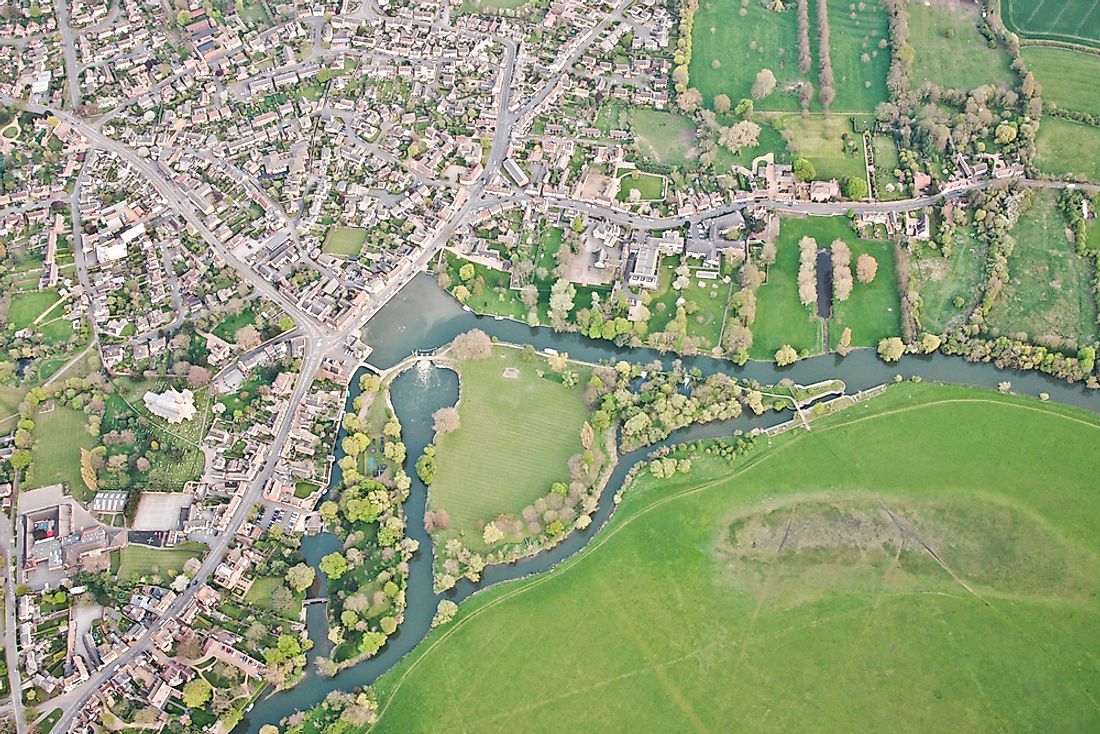What Is A Nucleated Village?

A nucleated village is a type of settlement pattern which has homesteads clustered around a central point called a nucleus. The focal point depends on location and culture and may include a church, park, sports stadium, market, etc. More developed areas such as towns and cities have nucleated villages. These villages are also known as clustered settlements. Most planned communities tend to be nucleated. Adjacent nucleated villages may merge through expansion to create a polyfocal settlement. Population size in nucleated villages is large and in most cases, there is high population density.
Reasons For Development
In a nucleated village the clustering together of buildings enables the sharing of resources such as electricity and water. Flat areas that lack geographic restrictions allow for outward growth of the towns in all directions. According to National Grid for Learning Cymru, defending nucleated villages is easy. In the medieval times, some of these settlements were around forts and castles which provided shelter for people living near them during battles or any form of danger. Busy road crossings offer market opportunities and in turn create plenty of jobs. Due to this, there is further development of a surrounding town which creates a clustered settlement.
Functions Of Nucleated Villages
Nucleated villages are large and have various functions, which can be used to classify them. In a rural setting, such a settlement offers limited services, but in an urban stting the range of services is more extensive. Nucleated villages developed around churches or monasteries are termed Ecclesiastical and provides for the people’s religious needs. Some function as port towns such as Limerick in Ireland which is on River Shannon. Other clustered settlements serve as residential, market, resource, or recreational areas. The township of Lucan in South Dublin is an example of a suburban town, which provides housing for individuals working in nearby cities.
Nucleated Villages In England
In England, development of most nucleated villages was experienced during the Anglo-Saxon period. These settlements were in the country’s central parts away from steep slopes and rocky soil. Villagers used open field systems with individual strips of up to three large fields which surrounded a village. A theory by Dr. Tom Williamson in 2004 explained the reason for the development of such settlements as a combination of climate and soil quality leading to use of various agricultural techniques. Landowners in the medieval period built new houses in two rows on plots having equal sizes, creating burgage plots. The burgage plots had back lanes that gave the villages a regular layout, which is still visible in England. Shapwick in Somerset, England is an example of a nucleated village.
Other Types Of Settlements
Apart from nucleated villages, other settlements patterns are linear and dispersed settlements. A dispersed settlement is one which has individual buildings or farmsteads scattered over a wide area, with large open spaces separating them. Its development is often in rural settings or in regions that have limited fertile soil and natural resources. The spreading out of people ensure
s cultivation of vast lands for more yields. Linear settlements consist of buildings or homes built to form a line, for instance, along a road or a river. Development of this type of arrangement provides easy access to transport routes which are sources of livelihood for residents.











